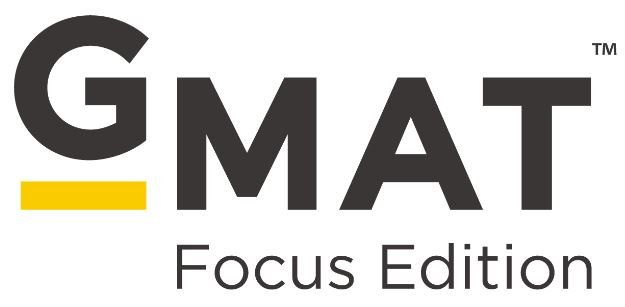The GMAT Focus Edition Is Now the One and Only GMAT
The GMAT Official Guide 2023-2024 is tailored for the new GMAT Focus Edition. Test takers who want to take the old GMAT should study the 2022 OG books.
The GMAC launched the GMAT Focus Edition on November 7, 2023, and this new version of the GMAT features updates to the content and format of the test. The old GMAT was retired on January 31, 2024, and now the GMAT Focus Edition is the one and only GMAT.
Some Top Schools Have Delayed Acceptance
Harvard Business School did not accept the GMAT Focus Edition for the September 2023 or January 2024 application deadlines; however, HBS will accept it going forward, starting with the 2+2 deferred admissions program application deadline on April 25, 2024. Wharton will accept the GMAT Focus Edition for regular MBA applications beginning in round 3 (April 2, 2024 deadline). Wharton will also accept the GMAT Focus Edition for the Moelis deferred admissions program, which has an April 24, 2024 deadline. Nearly all of the other top business schools announced that they will accept the GMAT Focus Edition for the 2023-2024 application season.
Format Changes
The new test consists of three 45-minute sections plus one optional 10-minute break, making it nearly an hour shorter than the old GMAT. The three sections are 1) Data Insights, which includes all the problem types in the old GMAT’s Integrated Reasoning (IR) section as well as Data Sufficiency problems like those in the old GMAT’s Quant section; 2) Quant, which consists solely of Problem Solving problems like those in the old GMAT’s Quant section; and 3) Verbal, which includes Reading Comprehension and Critical Reasoning problems like those in the old GMAT’s Verbal section. The three sections in the GMAT Focus Edition may be taken in any order, and the optional break may be used after the first or second section. (For the GMAT, it’s important to know that there are therefore 3! = 6 possible exam orders.) The GRE, on the other hand, offers no flexibility in choosing the order of the sections.
Data Insights
45 Minutes / 20 Problems = 2:15 Average Per Problem (0:15 less vs. old GMAT IR)
* Data Sufficiency
* Multi-Source Reasoning
* Table Analysis
* Graphics Interpretation
* Two-Part Analysis
Quant
45 Minutes / 21 Problems = 2:09 Average Per Problem (0:09 more vs. old GMAT Quant)
* Problem Solving
Verbal
45 Minutes / 23 Problems = 1:57 Average Per Problem (0:09 more vs. old GMAT Verbal)
* Reading Comprehension
* Critical Reasoning
Content Changes
The design changes in the GMAT Focus Edition are intended to emphasize “higher-order critical reasoning skills and data literacy” and to “only focus on relevant business skills.” Toward this end, the GMAT Focus Edition eliminates the 30-minute Analytical Writing Assessment essay as well as Sentence Correction and most geometry (coordinate geometry is still tested), while more data set analysis topics have been added. In the future, it would not be surprising to see the Data Insights section test new topics such as distributions, boxplots and quartiles, which are tested on the GRE.
In addition, Data Sufficiency problems, which only appear in the Data Insights section, no longer test what the GMAC terms, “Foundational Arithmetic” and “Foundational Algebra.” Accordingly, the Data Sufficiency problems in the 2023-2024 Official Guide and 2023-2024 Data Insights Review books are nearly all word problems. With one or two exceptions, there are no pure math Data Sufficiency problems.
In response to the GMAC’s shortening of the GMAT, the ETS abridged the GRE General Test. (See my post about the new shorter GRE here.) As of September 22, 2023, the new GRE is less than 2 hours: it reduces the number of quant and verbal questions and eliminates one essay, the experimental section and the 10-minute break. The new GRE does not eliminate geometry.
Don’t Expect Less Study Time
The new Official Guide (OG) 2023-2024 4-book set (available as paperbacks here and as e-books at MBA.com) is for test-takers who want to prepare for the GMAT Focus Edition. Other prep materials, including 6 new GMAT Focus Edition practice exams, are also available at MBA.com.
Although the main OG 2023-2024 has one-third fewer questions than the OG 2022 and although the GMAC is promoting the idea that the narrower range of content will require less study time, it’s hard to imagine how the new test will not still be ultra-competitive, requiring substantial prep time for most test takers. Moreover, since the separate Integrated Reasoning (IR) score on the old GMAT has been far less important than the total score (out of 800) and the quant score, few test takers have invested much time studying IR. But now, IR-style problems make up the majority of problems in the Data Insights section of the GMAT Focus Edition, and because Data Insights is weighted equally with Quant and Verbal, the importance of IR-style problems has been elevated substantially. Mastering the four types of IR-style problems requires significant effort, and all the IR-style practice problems are online, so even though the OG books are thinner, test takers should not expect to spend any less time studying.
Enhanced Navigation
In the GMAT Focus Edition, all questions are multiple choice, and a new Review & Edit feature allows test takers to bookmark questions. If time remains at the end of a section, test takers may revisit questions and change up to three answers per section. Therefore, in many ways, the new test is more like the GMAC’s Executive Assessment (EA): both are shorter than the old GMAT; both allow test takers to revisit questions; and neither requires an essay or geometry (though both do test coordinate geometry). The EA, however, does not currently offer the flexibility to select the order of the three sections, and, of course, the EA is for the most part accepted by Executive and part-time MBA programs, not regular full-time MBA programs. (See the list of programs that accept the EA here.) Adding the ability to revisit questions also makes the new GMAT Focus Edition more like the GRE.
New Scoring Framework
The GMAC has clarified how the new test is scored: it does not have only one total score, as previously reported. Section scores that each range from 60 to 90, along with percentiles, are provided for the Quant, Verbal and Data Insights sections. These section scores are weighted equally in determining a total score that ranges from 205 to 805, with all scores ending in a 5 so they can be differentiated from scores for the old GMAT. Business schools have traditionally sought candidates with strong quant scores, so the Quant section score will likely remain an important data point for candidates. See details on the new scoring framework here.
Adaptive Features
The GRE and EA are section-adaptive with the ability to revisit questions, while the old GMAT and GMAT Focus Edition are question-by-question adaptive without the ability to revisit questions. Correcting information provided in some early paperback versions of the OG 2023-2024, the GMAC has confirmed that the Data Insights section as well as the Quant and Verbal sections are adaptive. Because the GMAT Focus Edition retains a question-by-question adaptive approach, skipping a question by entering a guess and moving on would likely (barring a lucky guess) result in an easier, lower-scoring path, even if the test taker returns to that question later and answers it correctly.
New Official Score Report & Reporting Options
Included with the new test is a new Official Score Report, which the GMAC claims now offers improved insights to enable test takers to assess their strengths and weaknesses (“focus areas”). See details here. Finally, taking a step toward the functionality that the GRE ScoreSelect© program provides, the GMAT Focus Edition gives test takers more flexibility in deciding where to send scores after taking the test, both at test centers and online.


